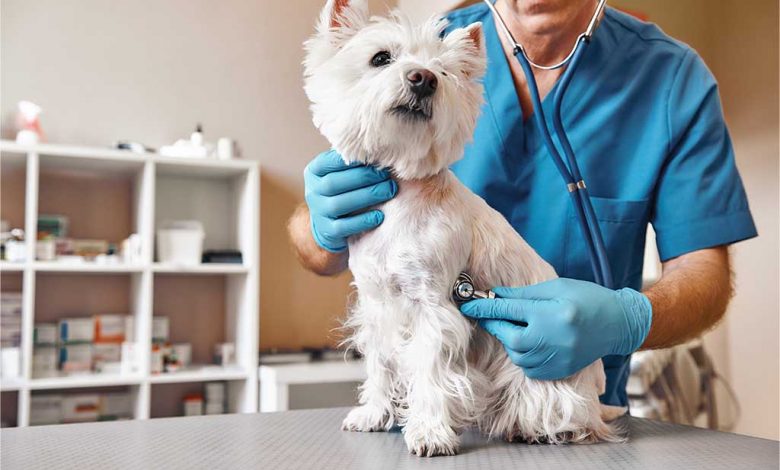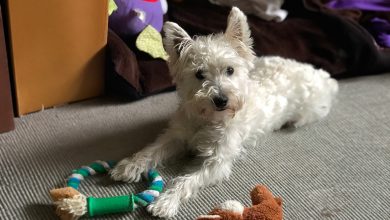Vet Lists Three Things That Could Endanger Your Dog
Don’t Risk your Westie’s Health this Summer.
“Summer is an exciting time of the year, and often means more time spent outdoors. However, while many of us can’t wait to bask in the warmer weather, it’s crucial for pet owners to keep in mind that a new season means new risks for four-legged friends”, says PDSA Vet, Lynne James.
Beware of the BBQ
“While we may enjoy the sunshine and take delight in an opportunity to cook up a storm outdoors, there are lots of things pet owners should be aware of when organising a summer barbecue. One thing to be wary of is furry family members getting hold of things they shouldn’t – eating things like kebab skewers or the core from corn-on-the-cob can cause serious and potentially life-threatening injuries.
“Make sure any leftovers and rubbish are thrown away in a bin that your furry friend can’t raid – food smells can be irresistible for pets, so make sure everything is paw-proof! Though it can be tempting to share tasty barbecue treats with your furry friend, undercooked and fatty foods can upset their stomach and cause sickness or diarrhoea. Bones are also a nasty choking hazard for dogs and risk causing dangerous blockages or damage to their insides.
“All pets should be kept at a safe distance from the barbecue as hot food, coals, and ashes can cause serious burns. Coal barbecues can take a while to heat up, so it is best to block off the area or keep your pet inside to stop them getting dangerously close. Whilst you’re grilling, keep an eye on where your pet is as the tasty smells may entice them to jump up and burn their paws.
Watch out for algae
“When out on walks, it is important to look out for blue-green algae, which is most prevalent in still or stagnant water during summer and autumn. Despite its name, this is actually a type of bacteria which is highly poisonous to animals and can sadly be fatal or result in long-term health problems for those that survive. Dogs are particularly at risk, as they are more likely to drink from ponds while out on a walk, or swim in affected water.
“Before letting your pooch dive in, make sure to check for blue-green algae. It often appears as a green or blueish scum, but sometimes has a brown tinge that can be seen on the water’s surface. It can also clump up and the blooms can create foam on the shoreline. However, it can be tricky to spot – look out for warning signs or dead fish in the water.
“Symptoms of blue-green algae poisoning can occur very quickly (within 15 minutes to one hour of exposure) and even a small amount can be lethal to a pup, so it’s important to act quickly and contact your vet immediately if you are concerned. Signs to look out for include vomiting, twitching, seizures, diarrhoea, increased thirst, drooling, breathing difficulties, or collapse.
Keep cool
“Pets can quickly overheat in warm weather, so it’s important to keep your furry friends cool while they’re enjoying time outside. Heatstroke is a serious situation that without swift treatment, can develop quickly, with sometimes fatal consequences.
“Signs of heatstroke can vary from excessive panting, confusion, bright red gums, foaming at the mouth, collapsing or even seizures. It’s important to ensure your four-legged friend always has access to fresh water and can easily get out of the heat to a cooler area when they need to – if they’re a sun worshipper, you might need to convince them to take regular breaks indoors!
“To help prevent dogs from overheating you can encourage supervised water play and keep them indoors or in cooler, shaded spots. Make sure to only take them out for a walk in the cooler evenings and mornings – and only if the ground temperature has cooled down! To help protect any neighborhood cats, including your own, regularly check greenhouses, sheds, and garages and encourage any of your own feline friends to hang out in well-ventilated rooms.
“For animals that live outside such as rabbits and guinea pigs, signs of heatstroke can include drooling, short and quick breaths, confusion, lack of energy, unconsciousness or even seizures. For these outdoor furry friends, it’s vitally important to keep their enclosures out of direct sunlight. If your garden doesn’t provide much shade, you can make your own by draping a tarpaulin or towel over part of your furry family member’s run – just make sure there’s a nice through-draught of cool air so it doesn’t get too hot inside.
“Remove any plastic houses, dens, and tunnels as they can become humid – instead opt for ceramic or cardboard alternatives. To provide some extra comfort you can also place a frozen water bottle on the outside of your small furry friend’s enclosure for them to lie against, or even buy some cool mats or blocks – but check these regularly for any damage. “All of these situations can be preventable, but if the worst does happen then it’s important that owners are prepared to deal with the situation. I’d encourage anyone who doesn’t feel confident in providing emergency treatment to their pet to download PDSA’s free pet first aid guide, which has a host of resources that range from lifesaving tips to treating small cuts and scrapes.”






